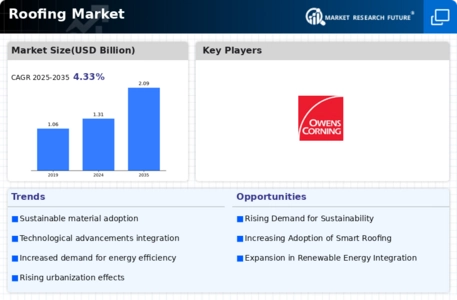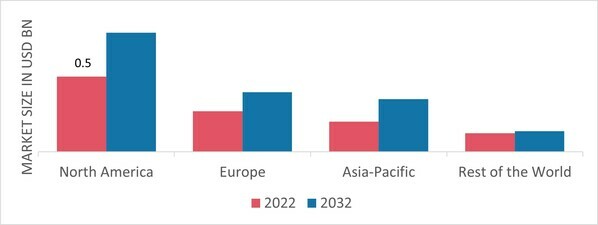Market Trends
Introduction
A confluence of macro-factors will bring about a major transformation of the roofing market as we enter 2024. Technological innovation is reshaping the product range, with advances in materials and in the installation of these materials leading to improved energy efficiency and the enhanced durability of the roof. Alongside this, the regulatory framework is being tightened, with governments around the world enforcing stricter building regulations and introducing more stringent regulations on the issue of energy performance and on the issue of sustainability, thus obliging manufacturers to adapt their business practices. Also influencing the purchasing decisions are changes in consumers’ attitudes and preferences, notably their growing interest in eco-friendly and cost-effective solutions. These trends are strategically important for the players in the roofing market, as they not only determine their positioning in the market but also present opportunities for innovation and compliance in a rapidly changing environment.
Top Trends
-
Sustainability and Eco-Friendly Materials
The market for roofing materials is increasingly turning towards sustainable materials, and companies like Owens Corning are taking the lead. According to a study, about 70 percent of consumers prefer eco-friendly roofing materials. This is leading to innovation in the industry. And with the government’s push for green building, demand is expected to grow even further. Recycled and sustainable materials will become more commonplace. Solar roofs will continue to evolve. -
Smart Roofing Technologies
In the meantime, the integration of smart technology into roofing systems is increasing. Atlas Roofing Corp., for example, is investing in IoT solutions. The data show that smart roofs can reduce energy costs by up to 30 percent. This trend is fueled by consumers' desire for energy efficiency and smart home. The next step will be to develop more accurate and more effective roof monitoring systems. The operational benefits will be lower maintenance costs and improved energy management. -
Increased Focus on Energy Efficiency
Energy-saving roofing is a new priority, with Duro-Last promoting its reflective roofing materials. Cooling costs can be reduced by up to 20 percent, according to studies. The trend is influenced by the worldwide drive to reduce the carbon footprint, and is reflected in the building codes. As energy prices rise, the demand for energy-saving roofing is likely to increase. Future implications may include tighter regulations on the energy performance of roofing materials. -
Adoption of Lightweight Roofing Materials
Among the most important roofing materials are those which are very light. Sika AG is developing new and lighter materials. According to the studies, the installation time can be reduced by up to 25 per cent with light materials. This is particularly useful for retrofitting old buildings, which are strengthened by this change. With urbanization, the demand for lighter materials will increase. The development of advanced composites, which reduce the weight even further without compromising on their properties, is one of the future developments. -
Expansion of Prefabricated Roofing Systems
Roofing materials are now fabricated in sections. Statistics show that prefabrication can save up to 50 per cent in the cost of labour. This development is being driven by the need for a reduction in the time taken for building and for the reduction of labour costs. As the building industry develops, it is likely that prefabricated products will come to dominate the market. Eventually, there will be more choice for consumers. -
Enhanced Durability and Longevity
Demand for durable roofing materials is growing, and 3M is developing new, long-lasting roof coatings. Data shows that high-performance roofs can last up to 50 years, which can greatly reduce the frequency of replacement. Moreover, consumers are increasingly interested in long-term investments and long-term guarantees. Since the manufacturers have a selling point in terms of longevity, they will probably continue to develop new products. Among the innovations that may be in the making are materials that can withstand extreme weather conditions. -
Regulatory Changes and Compliance
The roofing market is being transformed by the stricter regulations of governments, which are imposing stricter safety and environmental building codes. For example, in several states, new regulations require the use of fire-resistant materials. For manufacturers, compliance with these regulations is essential to product development and marketing strategies. If the regulations change, companies must be able to quickly adapt to the market to remain in the game. And the cost of non-compliance may rise in the future. -
Growth of the Residential Roofing Segment
Home-owners are re-roofing and building new houses in great numbers. The residential roofing business now accounts for more than 60 per cent of the market. The government’s incentives for home improvements encourage home-owners to put money into a quality roof. The residential roofing business is expected to grow with the housing market. Future developments may include more choices for home-owners. -
Integration of Aesthetic Design in Roofing
In the choice of a roof the aesthetic consideration is becoming increasingly important. The manufacturers are offering more and more shapes and colours. In research it has been found that forty per cent of home-owners give the aesthetic considerations the highest priority. This tendency is also influenced by the growing importance of the ‘kerb appeal’ in real estate. The companies have to keep up with changing tastes. In the future the industry may collaborate with architects to develop unique solutions. -
Digital Transformation in Roofing Services
The digital transformation is reshaping the roofing industry, with companies adopting digital platforms to engage with customers and deliver services. According to a survey, 75% of consumers prefer to communicate with service companies online. The need for increased efficiency and improved customer experience is behind this trend. Consequently, companies need to enhance their digital presence. And in the future, artificial intelligence will be used to provide a bespoke service to customers.
Conclusion: Navigating the Competitive Roofing Landscape
The roofing market in 2024 is characterised by intense competition and significant fragmentation. Both traditional and new entrants are in the race. In all regions, a greater emphasis on the environment and on new materials is influencing the strategies of the manufacturers. The established companies are able to use their reputations and are able to use automation and artificial intelligence to gain a better grip on their operations. The new entrants, in contrast, are focusing on flexibility and the development of eco-friendly solutions in order to capture the interest of the increasingly conscious consumers. Those who want to be in a position to be the leaders in this rapidly changing market are therefore able to integrate new technologies and sustainable practices.




Leave a Comment